Water is a necessity we use day in, day out, without a second thought. Whether it may be running a bath, flushing the toilet or turning on the dishwasher, many of our everyday activities around the house involve the use of water. So when we are faced with a water leak, it is vital to identify the source quickly and act on the issue, limiting wasted water and damage to your property.
Although you will need to enlist the help of a plumber, there are a number of ways that you can handle the situation in the meantime to prevent the problem from worsening. This guide will not only run through how to stop a leak in your home but also the most common causes and how to spot them.
A Full Guide On How To Stop A Leak
Having spent many years as plumbers in Milton Keynes and the surrounding areas, we have been called out to hundreds of homes experiencing a leak. And while in many cases they are unavoidable, there are many ways that you can limit the problem from reoccurring, helping to keep your water system in full working order.
Before delving into our guide, we felt it was important to begin with what to do in the event of a water leak. Although a water leak is unlikely to cause physical harm, it can have a detrimental impact on your property which is likely to lead to expensive repair fees. If you notice a leak, the key is to turn off your water supply and lay towels where the leak is. Don’t forget to also turn off any sources of electricity that is nearby to the leak, as failing to do this runs the risk of an electric shock. You should then contact a plumber to visit your home as soon as possible. Our team have over 30 years of experience and are available for emergency call-outs. Take a look at our emergency help page for more information on what to do should you experience a water leak and our contact details.
Now that we are familiarised with handling a leak, let’s take a closer look at the following topics:
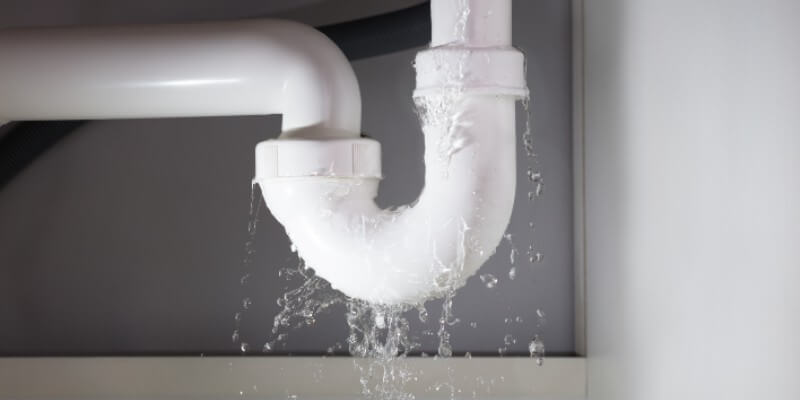
Common Water Leaks In The Home
If you are a new homeowner or are yet to experience a water leak, it can be tricky to know which components of your home are the most likely to cause an issue. To begin our guide, we have put together a list of the most common water leaks inside a house; all of these are aspects of your home that we recommend keeping an eye on.
Dripping Tap
When you think of a leak around the house, a dripping tap is likely to be the first scenario that comes to mind. While many simply learn to live with the annoying dripping noise, you would be surprised how much water even these small leaks waste. In fact, according to Direct Line, a vast 460 million litres of water is wasted every year in Britain down to dripping tap. To put this into perspective, that’s 184 Olympic-sized swimming pools worth of water!
Leaking Sink
As the pipes connected to your kitchen or bathroom sink are usually hidden inside a cupboard or basin pedestal, it means that leaks can easily be disguised. Not only this but in some cases, pipes are installed within the fitting or inside the wall itself, making it harder than ever to spot growing leaks. Leaks from sinks can happen for several reasons, including faulty seals, a cracked pipe and lose connections.
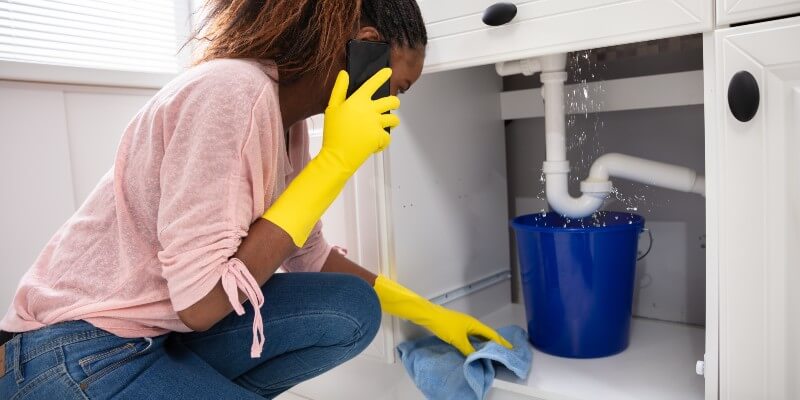
Appliance Leak
A leaky appliance isn’t always a major problem; as soon as a puddle begins to creep across the floor, we tend to address the issue fairly quickly. However, what if the puddle doesn’t make itself visible? If water begins to collect behind the appliance, regardless of how small the leak may be, it will soon start to seep into the wall or floor, creating irreparable damp and mould damage. Appliances that have the potential to leak include fridges, washing machines and dishwashers, so they should all be checked regularly to ensure that there are no small leaks silently causing issues. If you can, simply pull away your appliances from the wall every so often to give them a clean and check for any problems.
Leaking Shower Head
A leaking shower head isn’t uncommon, especially straight after it has been used. However, if it continues to leak even when not in use, this is a sign that a problem is growing. Similar to a leaky tap, the water waste from even a small fitting can be vast, increasing your bills considerably.
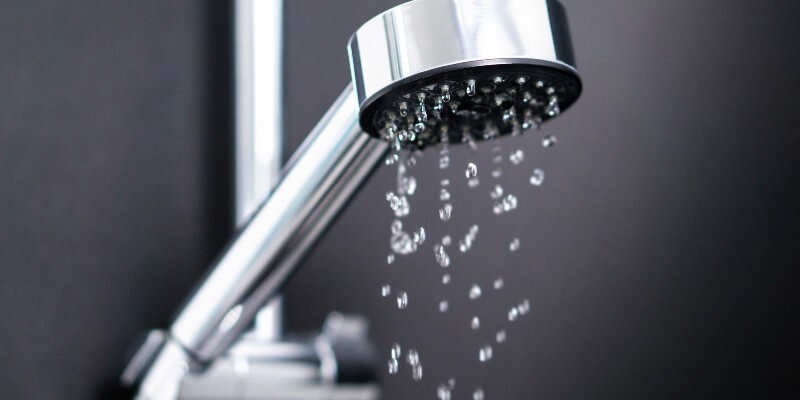
Signs Of A Water Leak
Although some leaks are noticeable and straightforward to fix, others can be incredibly difficult to detect. Luckily, there are several signs of a leak aside from those that are physically visible; these include the following:
Rise In Utility Bills
As mentioned above, over time, even small leaks can build up, wasting a considerable amount of water. With this in mind, if you notice that your water bills are high and not too sure why, then it could be that a consistent small leak is the culprit. Many water providers offer something called a ‘leak allowance’ alongside a water meter, meaning that you may be eligible for a refund if you have identified a leak and fixed the problem. For more information on how to request a refund, take a look at Ofwat, the economic regulator of the water sector in England and Wales.
Puddles Forming
By far, the most noticeable sign of a leak is a puddle. Not only could a puddle be caused by an appliance but also the sink, shower tray, within a cupboard housing a pipe or at the base of your toilet. Regardless of where your puddle has formed, it is important that you make a plumber aware as soon as possible to prevent further damage to your home.
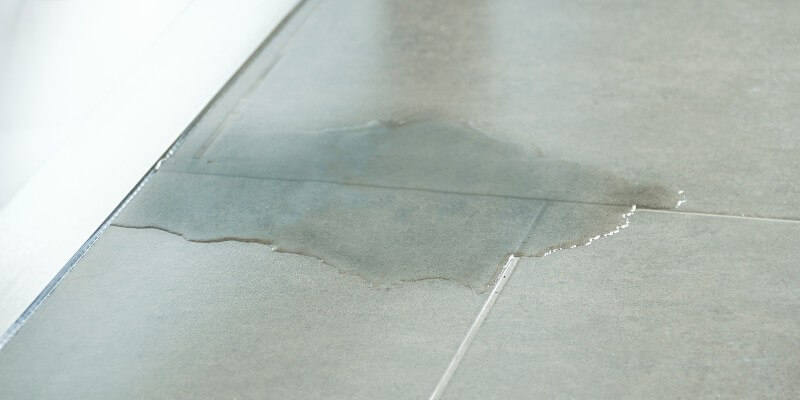
Mould & Damp Growth
If a leak occurs behind an appliance or within a fitting, it is easy for them to be left to wreak havoc silently. If this is the case, mould and damp can be the first indication that there is a problem, which should be treated immediately as not only can it cause structural damage but also runs significant health risks. Permagard has put together a page with information on these health risks.
As well as calling a plumber to get the leak under control, you may also need to look into treating the mould professionally. Envirovent has useful tips on how to remove rising damp and mould effectively, so it doesn’t go on to cause further issues.
Bubbling Or Whistling Sounds
If a leak is down to a burst pipe, then this can cause significant problems if left to worsen, whether it may be small or large. Walls contain a vast number of pipes, allowing water to run through various rooms inside your property. The heavy reliance on pipework means that pipes can often burst out of signs and be left to leak until more significant problems occur. In this instance, you are likely to hear bubbling or whistling sounds, along with a dripping sound from the inside of the walls. For more ways to spot a burst pipe, take a look at Hunker.
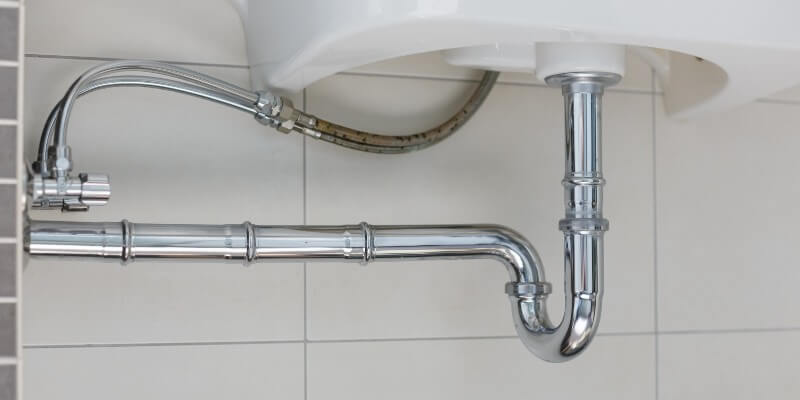
How To Stop A Water Leak
Depending on where in your home your leak is located, along with its severity, you may be able to rectify the problem quickly through DIY methods. However, in other instances, it is far more sensible to contact a plumber for guidance, who can then recommend the next steps. With this in mind, we have put together details on the four most common water leaks we encounter with the measures you should take to resolve the problem.
How to fix a leaking:
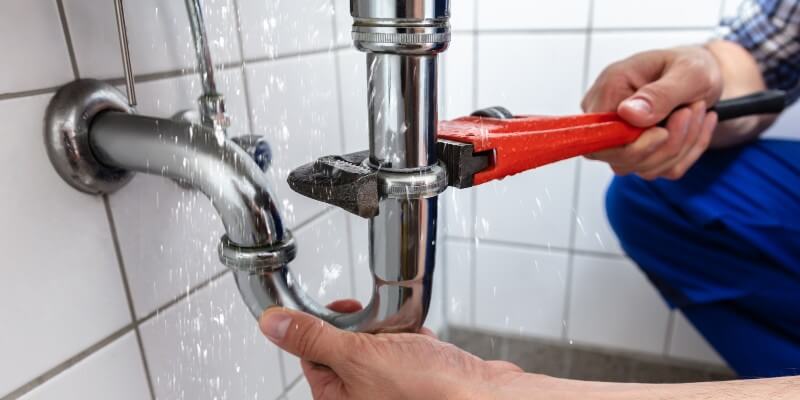
How To Fix A Leaking Tap
In most cases, the reason behind a leaking tap is an old washer that is no longer serving its purpose. Luckily, this is straightforward to rectify using the following steps:
- Check whether there is an isolation ball valve on the pipe under the sink. If there is, ensure this is turned off by turning the handle to a right angle.
- For those who do not have an isolation ball valve, you will need to turn off your water supply via the stopcock.
- Turn on the tap to drain any remaining water and then remove the head.
- Undo the headgear nut with a spanner and remove the headgear assembly.
- You will find the washer in the jumper; remove the old washer and replace it with a new one.
- Reassemble the tap and turn the isolation ball valve or stopcock back on.
- Test your taps and ensure that there are no more leaks.
How To Fix A Leaking Pipe
Whether you will need to enlist a professional to fix a leaking pipe will depend on the level of damage. For example, if the problem is as simple as a loose joint, then all you will need to do is tighten the joint using a spanner. However, if the pipe itself is leaking, such as through a crack in the material, then this will need to be removed and replaced. In this instance, we highly recommend contacting a plumber as the process can be complicated, and without the correct knowledge, you may do more harm than good.
One of the most common causes of a burst pipe is cold weather. During the winter, when temperatures drop, the water inside pipes can freeze, expand and then cause cracks. There are various ways that you can prevent this potentially catastrophic issue, and we recommend watching the video by UISCE Water below for more information.
How To Fix A Leaking Radiator
It isn’t uncommon for radiators to leak, and in most cases, it is possible to rectify the problem through DIY methods. The key to finding the culprit is to completely dry the radiator with an old towel, for example, and then go around the radiator checking each fixture. This will help you to work out where the leak is coming from.
There are two main fixtures that are likely to leak; the valve and the spindle. The valve is most likely to leak when it has been turned to the ‘mid-open’ position but will stop when the valve is fully closed. Below is a helpful video on how to repair a radiator valve.
For a leaking spindle, on the other hand, you can easily repair this by tightening the gland nut using a spanner. If this does not work, start by undoing the nut, put some PTFE tape around the spindle and then tightening it back up – this should solve the issue altogether!
How To Fix A Leaking Shower Head
Much like any other water leaks, there are several reasons why your shower head may be causing a problem. The first is a build-up of hard water deposits which forms inside the holes in the shower head. This can easily be removed by soaking your shower head in white vinegar overnight then scrubbing away the accumulated deposits.
In other cases, there may be a component inside the shower head that is broken or beginning to deteriorate; this is typically the seals, washer or cartridge in the valve body. These are all replacements that you can do at home without the need for professional assistance; however, like always, if you are unsure, our plumbers would always be happy to point you in the right direction. If you are planning to replace your own components, we suggest taking a look at the Bob Vila website, which includes details on replacing the seals, washer, and cartridge.
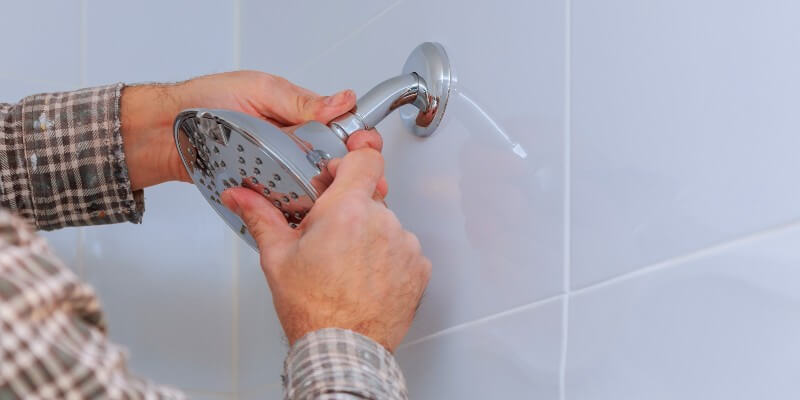
Keeping Your Home Safe From Water Leaks
Regardless of how small a leak may seem, it should never be ignored. Not only can a water leak cause immense damage to your property, but your water bill will undoubtedly also take a hit. Save your belongings, the structural integrity of your property and your bank balance by looking out for the warning signs of small leaks and acting on them immediately. If in doubt, do not hesitate to get in touch with our reputable plumbers. We have many years of experience across all areas of plumbing, from emergency help to boiler installations in Milton Keynes, so we can ensure that your home remains safe and back up in full working order in no time.













